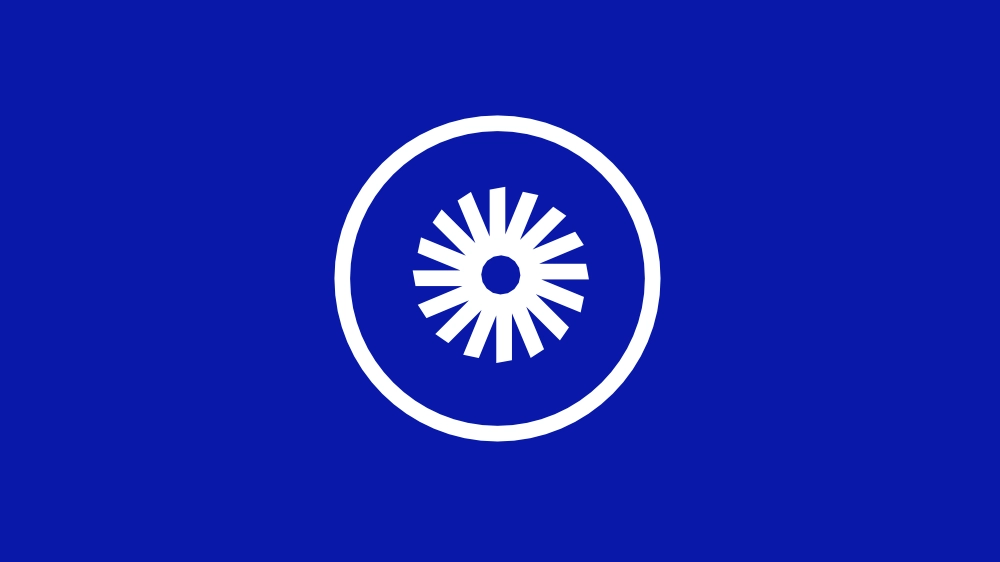Writing a blog article is not really complicated. However, it is more difficult to create texts for a blog that are really well received by readers, are shared and ideally also go viral. But what factors determine whether a post is interesting? In addition to the actual content and length, the structure is particularly important. In this article, we explain in detail exactly what to look out for in terms of structure.
Why should an article be well structured?
A blog post should reach readers. They should be captivated by the content and enjoy reading it. Boring texts with no added value and no real benefit have no chance of being rated as good and shared by users. Even the headline needs to be inviting and exciting. Once curiosity has been aroused, the content offers a lot of helpful information and the structure is right, readers will certainly delve further into the text. A well-scannable structure keeps readers happy and on the page, which is ultimately the point of the whole exercise. The bounce rate is kept as low as possible by a well-structured blog post with helpful content.
The aim is to provide the reader with exciting, well-structured and easy-to-understand content in order to keep them on the page for a long time and ultimately encourage them to convert.
If readers drop out straight away, it may be due to various factors. Either they had something else in mind or they find it too boring. However, it is often due to the structure of the text when readers skip off after the first skim. Users want to be guided through the article and find the information they want without having to search too hard. It is therefore a good idea to create a table of contents with all the important content for users. This enables a quick overview as well as a more in-depth look at the topic with just one click.
What does the basic structure for a blog article look like
What exactly defines a good blog article structure? In general, a blog post consists of an introduction, main body and conclusion. The individual passages are basically self-explanatory in terms of content. But what characterizes the individual sections and what should you pay attention to?
| Introduction | Main part | Conclusion |
| - Keep it short | - Subdivide well | - Summary of the content |
| - Briefly address the problem | - Intensive engagement with the problem | - Conclusion |
| - Solution approach | - Present solutions to problems |
This subdivision is certainly plausible. It is important that the content is coherent, offers solutions and does not end abruptly. Good planning of the content in the main section is therefore very important. However, even the introduction must be designed in an exciting way so that readers read on in the first place. Users also want solutions to a problem and want to be properly informed by the blog article. In practice, however, it is often the case that texts are seen without added value or without a solution to the problem. The end result is that the user bounces, does not share the article, does not convert and will most likely not visit the page again.
Which formatting elements are part of a good blog article structure?
In addition to the basic structure, different formatting elements are also necessary to break up the structure, guide the user through the article and present the highlights at first glance. Nobody wants to read a long article that is not properly structured and formatted. However, with various design and formatting elements, it is no problem to give the text momentum and make it interesting. Format structure refers to the elements that must not be missing in order to offer readers a good blog article. These include
- Headline
- Teaser
- Subheadings
- Bullet points
- Visual elements
- Links
- CTA Button
But what exactly do these elements contain and do? How should these formatting elements be used? Below is a detailed overview of the different types of content.
A good mix of different formatting and design elements is essential. The individual design makes the article really exciting, captivates the reader and takes into account the different reading and absorption behavior of each person.
CTA button as a call to action
A blog post can be spectacular, but still not lead to the goal. Perhaps it lacks the necessary CTA button, which is to be understood as a call to action. CTA is the abbreviation for Call to Action and is intended to tell the reader what to do next and prompt them to take action. The button is intended to trigger a specific reaction. The following prompts are conceivable, for example:
- Give us a call!
- Visit us - make an appointment!
- Sign up for the newsletter!
- Download a checklist, fact sheet or e-book now!
- Try the trial version now!
In principle, a conversion should be the goal of every landing page. The company's own goal, for example that the reader registers, orders something or seeks advice, should be achieved by the CTA button or supported as part of the sales funnel. Experience has shown that it is successful to have the CTA buttons in sight. For small articles, one button is often sufficient. However, in the case of extensive articles, it is advisable to place at least two or even three buttons, depending on the length of the text, so that the reader can always click on them when required. We have the necessary know-how and create and optimize blog posts with all the important features for small and medium-sized companies.
Headline as a magnet
A good headline for your blog article is the be-all and end-all. The headline should make readers curious for more. It should attract attention and encourage them to click on the blog post. The headline should also encourage the user to continue reading. The following points are considered optimal headlines:
- Make readers curious
- Maximum length of 60 characters
- Brief summary in 6-8 words (search word first)
Sometimes it's not so easy to create the right idea for an exciting headline that makes you want to click on it. Experience has shown that headlines that promise to solve a problem are always well received and invite people to click on them.
Teaser for even more excitement
A teaser is a short text element that is intended to build up suspense and make the reader even more curious about the article. In principle, it is an element that should encourage the reader to read on. It is displayed as a preview, which is why it is so important. If the teaser is not very exciting, readers will not be curious and will therefore not click any further. Wikipedia offers a good explanation of the term teaser, which provides all the important information.
Subheadings for an even better overview
Experience has shown that many users only read the sections that really interest them. Not every word is read. Instead, the text is scanned and important points are filtered out. Subheadings give readers a direct overview of the content of the text and help them decide whether it is worth reading on. If, for example, there is only one large headline, the user knows what it is generally about. But they cannot see at first glance whether a solution is really being offered for their specific problem. And nobody wants to read an eternally long text that is ultimately useless. Subheadings such as H2 and H3 are ideal for a proper structure in the main section.
Use bullet points and break up text
Bullet points are a must in a good article. They break up the structure and are very easy to scan. Bullet points contain important facts and solutions that might otherwise be lost in the text. Sections that could be useful for the reader can therefore appear as bullet points and spice up the blog article a little. However, the bullet points should also be brilliantly written. The following points are interesting:
- Keep slim
- Design with variety
- Do not forget punctuation marks for complete sentences
- Subdivide longer lists with text passages
If the list of bullet points is infinitely long, it can quickly happen that the reader jumps off. This is why a good structure is also necessary in this respect. It makes sense to integrate a short text passage after four to five points to build up even more suspense. The next highlights could then be listed.
Visual elements as eye-catchers
Visual elements are also important in a blog article to give the blog more life and generate even more interest. Visual elements include videos and images. Presentations and infographics that offer interesting news are also useful. Such elements are eye-catchers and significantly spice up the post. Readers enjoy reading visually designed articles more than just plain text.
Links for further sources of information
It is often difficult to summarize all the details about a specific topic in one text. That's why it makes sense to include links in the text. Both internal and external links can be used to provide helpful information on the topic. Readers will be pleased if they can access other interesting articles on the relevant topic with just one click and do not have to search for them themselves. Internal linking is also an SEO-relevant topic. However, too many external links carry the risk that the visitor will leave the page and possibly not return.
at this point our reference to a thematically appropriate article is appropriate: what-is-cornerstone-content?
Are SEO and keywords important for blog posts?
The topics of keywords and SEO no longer really belong in the blog article structure section. Nevertheless, they should be taken into account. Keywords in particular are very important and should not be missing in the headline, subheadings and the text itself. Long-tail keywords are particularly helpful in the text to help Google understand the context of the text. This significantly increases the chance of achieving a good search engine ranking for many keywords related to the topic of the blog post.
Cornerstone content as a content strategy serves the same purpose of positioning the site as a competent information center on the topic presented. We deal with the topic of cornerstone content in detail in our article "Cornerstone content - what it is and why we need it".
Are there guidelines for the length of a well-structured blog post?
It's easy to argue about how long a well-structured blog post should be. Ultimately, it's part of the content strategy. Some bloggers publish many smaller blog posts per month. Others only create one long post in the same period. The topic also plays a role. Well-written informative posts often rank well with less than 1,000 words. For other topics, I need more text and these only become interesting from a word count of 2,000 words. However, experience has shown that posts with a high word count, which are properly structured and offer added value, rank better than short posts. The following facts are interesting here:
- Blog posts should contain at least 1,000 words.
- Content lengths of 1,500 to 2,500 words are recommended.
- Long posts with relevant and interesting content are shared more often.
- A lot of short content in a short time is a good alternative.
If you are already dealing with a topic in 200 words, you should not try to make the content unnecessarily long. If all the important points and solutions are covered in a very short article, it is counterproductive to write more. The unnecessary length makes the article uninteresting for the user because it ultimately loses its added value.
No matter how long the posts end up being, the quality of the content has to be right. This means: readability, structure and usefulness simply have to be right to make the reader curious and keep them on the page.
Conclusion: Creating well-structured blog posts through diversity
Systematic writing is important to be successful online. There are many design options and elements that significantly spice up and enhance the content in a blog. Readers love variety and special highlights. They therefore like to read well-structured blog posts that are designed accordingly and offer variety. Everyone should put themselves in the shoes of a reader. Surely nobody likes to read a string of words that offers little structure and no visual highlights. In order to be successful with content online, it is essential to consider the points mentioned above. Of course, it takes time to structure texts properly and add various design elements. However, if you provide the reader with well-structured texts with added value, you can look forward to many likes and conversions.







